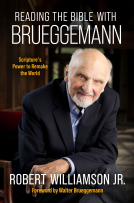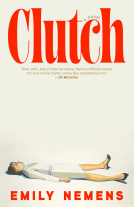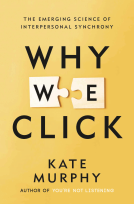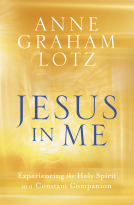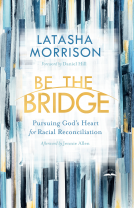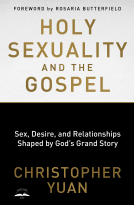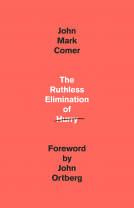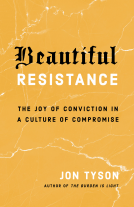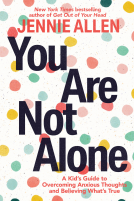
Preaching God's Grand Drama
A Biblical-Theological Approach
by Ahmi Lee
This title was previously available on NetGalley and is now archived.
Send NetGalley books directly to your Kindle or Kindle app
1
To read on a Kindle or Kindle app, please add kindle@netgalley.com as an approved email address to receive files in your Amazon account. Click here for step-by-step instructions.
2
Also find your Kindle email address within your Amazon account, and enter it here.
Pub Date Oct 15 2019 | Archive Date Oct 04 2019
Baker Academic & Brazos Press | Baker Academic
Talking about this book? Use #PreachingGodsGrandDrama #NetGalley. More hashtag tips!
Description
Available Editions
| EDITION | Other Format |
| ISBN | 9781540960498 |
| PRICE | $26.00 (USD) |
| PAGES | 192 |
Average rating from 4 members
Featured Reviews
 Christian W, Reviewer
Christian W, Reviewer
My review of “Preaching God’s Grand Drama: A Biblical-Theological Approach” by Fuller professor Dr. Ahmi Lee.
Goals of the Book:
Most people today are familiar with only a handful of preaching styles. The first, and maybe the most primary one, is the exegetical/expositional preaching model. This model is a text based model, centered on making the point of the text the point of the sermon. Another model that has been popular lately is the storytelling or poetic model, which looks more to “tell a story” or “chat” than exposit a text. Dr. Ahmi Lee looks to find a third way: a theodramatic liturgical model that draws on Kevin VanHoozer and NT Wright’s models of “the five act play” that brings people into the drama and story line of God himself.
This book is also deeply personal, having come out of Ahmi Lee’s experience as living “in-between spaces”. She describes her Korean mother and essentially-Japanese father’s influence on her growing up, and her life as a Korean woman with this heritage as she grows up in the world. This “third-way” of life opened her eyes to seeing a new way to preach which she expounds here.
What Does This Book Offer the Church?
The first three chapters of the book wrestle with the two preaching models that I mentioned above. Looking at these models, Lee writes about some of their strengths, but mostly focuses on their weaknesses in trying to communicate all of God’s truth to the congregation. She then looks at the epistemological dimensions of these styles, asking how they form our congregations. In light of their lacks and failures, she developed this third model to find what she thinks is a more faithful and efficient way of preaching the gospel.
How Successfully Does it Meet its Goals?
Dr. Lee has a warm writing style, one which invites a closer read, even if you’re not convinced of the need for a new preaching style (as I am/was). Dr. Lee argues well toward the lacks of the “traditional” preaching models, and whether or not you as a preacher adopt the new model, these critiques are worth considering and addressing while you grow in your preaching practice.
I would love to recommend this book, and I hope Fuller students interact with it in their classes. I would be curious to see if this book makes the rounds as part of more preaching classes. You can get more info from Baker’s site here or pre-order it on Amazon today!
An enlightening read, with interesting perspectives, on what current pastors/preachers/priests are facing in our culture, and how to respond to it, and to God' Truth, from the pulpit.
Preaching God’s Grand Drama by Dr. Ahmi Lee is a fresh take on the importance of a preaching style. Lee emphasizes the need to move from an expository to a more dramatic style via the use of storytelling in the style of a 5-act play so that listeners may enter into the drama to better understand the story-line. The book discusses the existing preaching models and then moves forward to what she espouses as a between preaching model as it more faithfully represents the Gospel.
 Conrade Y, Reviewer
Conrade Y, Reviewer
Not all kinds of preaching are the same. There is also no one way to preach the Bible. It depends on the genre. It depends on the audience. With such a wide range of contexts and circumstances, preaching remains one of the most challenging vocations. How do we make sense of the nature of preaching? How can preachers preach in a way that is faithful to the text and yet relevant to the listeners? This is the constant challenge for all. The purpose of this book is twofold: First, to describe the “text-based” and “reader-based” forms of Bible interpretation in today’s world. Second, to find a third way based on the strengths of the two homiletical approaches.
Chapter One summarizes the traditional homiletic by using four metaphors. The "herald metaphor" pronounces the message of God that the Word originates with God; the preacher called by God to spread the Word; and a congregation ready to receive the Word as proclaimed. The "banking metaphor" is about expanding preaching into teaching and storing the knowledge of the Word in the minds and hearts of listeners. The "golden key metaphor" is about preaching sermons to unlock a central message. The "still-life picture" focuses on the big idea from which we derives applications for life. There are many merits to this approach. The main one being the absolute trust in the power of the Word to speak. However, Lee cautions us about two "dysfunctions" of such mining approaches. First, there is a tendency to be so text-focused that we neglect "attentiveness to God." Second, we treat application as an "accessory" instead of as an important "hermeneutical lens." In other words, application should not be the end or the means to the truth. It should be a byproduct of a bigger spiritual reality and encounter with God. The strengths and weaknesses listed sets the stage to compare with the other perspective: Reader-Perspective. Chapter Two looks at this New Homiletic movement that is based on the conversational style. Lee highlights three different conversational styles through the homiletics of Lucy Rose, John McClure, and O Wesley Allen Jr. The New Homiletics includes diverse preaching models that adapts rhetoric; authority alongside rather than above the community; anticipatory models; shared stories; congregational exegesis; and others. For Lucy Rose, the new homiletic is dialectical. John McClure prefers the collaborative styles while O Wesley Allen Jr takes on the subject of "meaning-making" that focuses less on absolute truth but on relevant truth. All of them acknowledges the cultural shifts happening in the congregations. As appealing as the New Homiletics may sound, Lee has several critiques packed in Chapter Three. Key weakness is in the subjectivity of the New Homiletics. In trying to take the best of both worlds, Lee proposes her model in the next three chapters. She argues her theology in Chapter Four by calling it a “dramatic view of theology" based on the findings of several theologians, especially Kevin Vanhoozer. In this drama, there are "three agents of communication: God, messenger, and congregation." She describes the three approaches to theology by describing the epic (objectivity); the lyric (New Homiletic subjectivity) and the dramatic (middle way). She hopes to bring sermons alive through the appropriate bridging of the epic and lyric ways through theodrama. She notes that "Preaching is a performance of the theodrama based on the biblical script in interaction with the present context."
Lee concludes with four perspectives of a "theodramatic homiletic." She calls these perspectives as "practice-shaping" perspectives. They are namely: "retrospection, introspection, extrospection, and prospection." Retrospection is about considering God's historical acts. Introspection pays attention to what God is doing in the present in us. Extrospection looks at what God is doing around us. Prospection pays attention to the future acts of God.
My Thoughts
Strengths: This book provides readers with a grand overview of the traditional and the new homiletics landscape. With so many preaching styles and books written about preaching, the layperson may be confused by the array of offerings out there. Lee's book gives us a helpful framework to classify the works of many famous preachers such as Augustine, David Buttrick, Fred Craddock, Haddon Robinson, Thomas Long, Philips Brooks, John Stott, and many more. She makes a keen observation of the preaching scene and sharply identifies the strengths and weaknesses of the historical and modern homiletical environment. Her theodrama models is a formidable effort to bridge the two. With skillful scholarship and astute observations, she makes a good case for a new middle way to optimize the best of both worlds. I like especially her wide knowledge of preaching styles which gives her a unique position to critique and to propose any alternative views. As the material in the book is quite dense, I am glad to see a brief summary of key points at the end of each chapter.
Weaknesses: Unfortunately, there are weaknesses in her approach. First, it is not exactly something new. Even though Lee states that her model is not a New Homiletic, I still think it is a form of "New Homiletic" on the basis of the subjectivity. Drama itself is already subjective. I would say that her techniques would be roughly a 40/60 combination of the traditional and the New Homiletic. That means that the theodrama is slightly skewed toward the New Homiletic, which may not be that surprising, given the more recent development of the latter. Second, the material in the book is more academic than practical. While she argues her case well with regard to the specific strengths and weaknesses, I think that alone does not merit the formulation of a totally new preaching perspective. For example, we could always "redeem" the traditional by putting more emphasis on the subjective parts. Plus, it is always a risk to try to challenge the established preachers of old, who had been used by God to bless so many congregations. Third, there is always a danger in misrepresenting or reducing the other preaching perspectives when it comes to scholarly work like this. For that reason, I would say consider Lee's thesis with an open mind.
In summary, this book is strong in giving us a birds eye view of the world of preaching and homiletical styles. It helps us appreciate the perspectives of a wealth of preachers both historically and currently. It is hoped that preachers and readers can take heed of Lee's observations about the strengths and weaknesses of each approach, and to develop their own preaching voices.
Dr Ahmi Lee is assistant professor of preaching at Fuller Theological Seminary. She has 12 years of pastoral experience and is an active preacher/speaker worldwide. She has also served as translator for Campus Crusade for Christ Japan.
Rating: 4 stars of 5.
conrade
This book has been provided courtesy of Baker Academic and NetGalley without requiring a positive review. All opinions offered above are mine unless otherwise stated or implied.
Readers who liked this book also liked:
Publishers Lunch
General Fiction (Adult), Nonfiction (Adult), Teens & YA
Robert Williamson Jr.
Christian, Nonfiction (Adult), Religion & Spirituality
Keza MacDonald
Business, Leadership, Finance, Entertainment & Pop Culture, Nonfiction (Adult)


